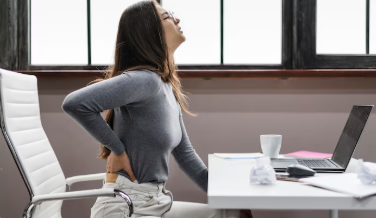Do you feel pain, numbness, or tingling in your lower back, especially when standing or walking for long periods? Does the discomfort reduce when you sit down or lean forward? These may be signs of a condition called lumbar spinal stenosis, a leading cause of lower back discomfort in adults over the age of 40.
The good news is that there are effective ways to manage this condition without undergoing surgery or depending on long-term medication.
Understanding What’s Happening in Your Spine
Lumbar spinal stenosis occurs when the space inside the lower spine narrows, placing pressure on the nerves. This often develops slowly over time, and many people are unaware of the severity until it begins to interfere with everyday activities.
Common causes include:
- Age-related degeneration of spinal discs
- Bone overgrowth caused by osteoarthritis
- Herniated or bulging discs
- Thickened ligaments within the spinal canal
- Poor posture or previous spinal injuries
Without timely Lower Back Pain Treatment, this condition can result in reduced mobility, nerve damage, and a significant impact on your quality of life.
Recognising the Warning Signs
Symptoms tend to build gradually. If you are experiencing any of the following, it may be time to explore Lower Back Pain Treatment options:
- Persistent stiffness or aches in the lower back
- Tingling or burning sensations in the legs or buttocks
- Weakness or heaviness in the legs
- Relief from discomfort when sitting or bending forward
- Difficulty standing or walking for extended periods
Ignoring these signs can lead to long-term complications that are more difficult to manage later.
A Non-Surgical Path to Relief at ANSSI Wellness
At ANSSI Wellness, we specialise in non-invasive solutions that target the root cause of spinal issues. Our leading treatment method, Non-Surgical Spinal Decompression Treatment, is a gentle and FDA-cleared method that reduces pressure on the spine and promotes natural healing.
This approach to Lower Back Pain Treatment helps by:
- Increasing space between compressed vertebrae
- Reducing nerve pressure and inflammation
- Enhancing hydration and healing of spinal discs
- Improving alignment and mobility in the lower back
Every care plan is tailored to your unique condition, lifestyle, and long-term goals, without the need for surgery or medication.
Supporting Recovery Through Everyday Habits
Alongside professional care, these home-based strategies can accelerate your recovery:
- Maintain good posture, especially while sitting for long durations.
- Use proper lumbar support in your chair or car seat.
- Take short walks daily to boost circulation.
- Avoid heavy lifting and high-impact workouts.
Incorporate core-strengthening exercises to stabilise your spine.


